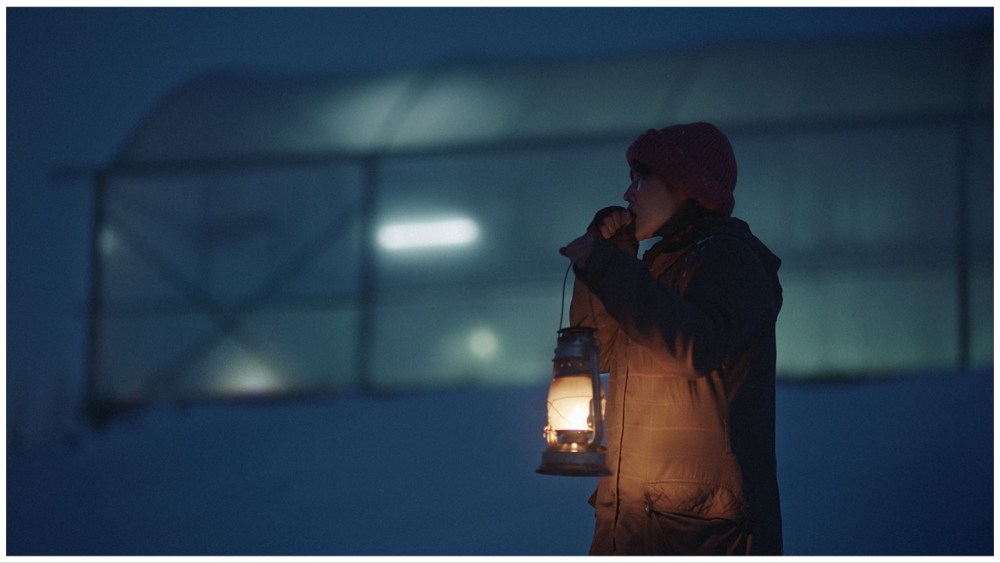‘In the Lands of Brothers’ Review: An Assured Iranian Debut
Distinguishing itself from other immigration narratives by telling a story set in an overlooked part of the world, “In the Land of Brothers” introduces two distinctive new filmmakers in Raha Amirfazli and Alireza Ghasemi. Making their feature debut — which landed them the directing prize in Sundance’s World Dramatic competition — the pair follow in the footsteps of such recent movies about the journey to a new land as Mati Diop’s “Atlantics“(which traced African migration into Europe) and “I Carry You With Me” (one of many about flight from the Americas into the U.S.). With deft storytelling and assured filmmaking, they tell the story of an extended family from Afghanistan and their 20-year odyssey to find shelter and home in neighboring Iran after the American invasion of 2011.
The film is divided into three vignettes, all set in Iran, though each at a different time and around a different historical milestone in Afghanistan — from the aforementioned invasion to the Taliban takeover in 2021. In 2001, sensitive teenage student Mohamed (Mohammad Hosseini) is harassed into free labor by Iranian police because of his status as an immigrant. He also has a sweet and innocent flirtation with another teenager, Leila (Hamideh Jafari). Ten years later Leila, now mother to a young boy, navigates grief over a death in the family, while trying to avoid the Iranian authorities because of her status as an illegal immigrant. In the final third, the film follows Leila’s older brother Qasem (Bashir Nikzad), as he deals with another bereavement and the promise of finally settling legally in Iran with his wife and children.
Amirfazli and Ghasemi’s script is economical in dialogue, but rather plotty. In each section of the film, many situations unfold with dire consequences for the three protagonists. What keeps the audience invested is that the script, while heavy on melodramatic tragedy, clearly charts the characters’ varied emotions; fear, love, grief, anxiety, sweet relief. For this to be successful, the actors must carry most of the weight. Though identified as non-professional actors in the press notes, Hosseini, Jafari and Nikzad emerge as accomplished thespians, able to give “In the Land of Brothers” the dramatic heft it needs.
Hosseini subtly anchors the movie, his eyes a well of emotion through which the audience can read all that he’s feeling. Without this grounded performance at the film’s outset, the rest would not be as memorable — we do miss Mohamed when he’s gone, and part of our investment in the other two stories is about trying to figure out what happened to him. (The directors evocatively answer that question in a fleeting moment later in the film.)
While Hosseini stays quietly still throughout his scenes, Jafari has to navigate Leila’s busy life with constant movement. She works as a maid for an Iranian family in a coastal city, while taking care of her son. She’s never alone; someone is always asking her to take care of something. Yet despite all the fussiness surrounding her character, Jafari maintains an expression rich in emotional meaning. Nikzad carries a finale that, while as sad as the rest of the film, also brings the most hope to this family. He ably straddles the lines between sorrow and relief, singlehandedly filling the film’s ending with optimism.
The filmmakers are smart in keeping the same actors playing the same roles over the 20 years in which the story unfolds, thus maintaining an emotional throughline over the span of the film. They do that by ensuring each of the three has a smaller role in the stories they are not leading. Except for one unfortunate instance of too much hair and beard dye — a small gripe when the performances are this strong — all three actors are believable at whatever age they are playing.
Using distant long shots that show the harshness of the terrain, juxtaposed with intimate closeups that center the actors, Amirfazli and Ghasemi prove to be natural filmmakers. They find the story in what’s unsaid by the characters, in the spaces between them and the places they inhabit. A raucous school, a deserted beach, a government building: All these show the alienation of the characters and their distance from home. Setting the film in three different eras, with historical context only heard in the background from blaring TVs and radios, underlines the filmmakers’ bold insistence that they don’t need to explain much. The truth is clear in the camera’s movement, and the actors’ faces.

